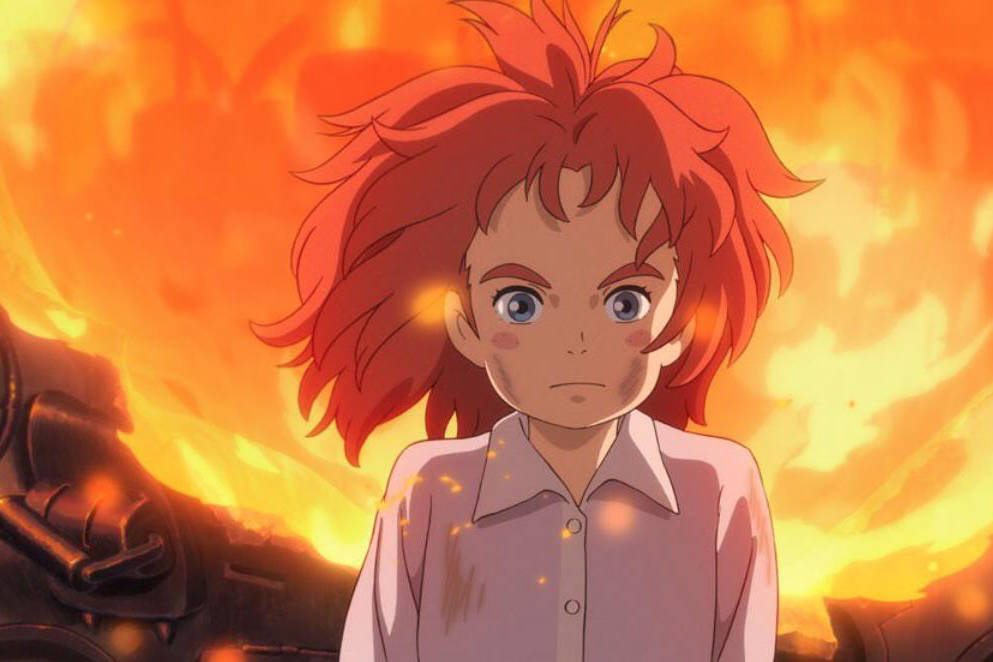This week saw this release of yet another major children’s film, the finale to a major kid trilogy and I’ve heard almost nothing in response.
There was some slight early buzz that the third film in the “How to Train Your Dragon” series was supposed to be really good, but since it came out I’ve heard nothing. That doesn’t mean anything in and of itself. Maybe I’m just distracted. But usually, when a new release of this size comes out my kids are clamoring for it, birthday parties are being planned — it’s a whole thing. Not so here.
It could be that there is a little bit of fatigue toward this kind of movie right now. Regardless, this week I chose to write about a different kind of animated movie, one that is a bit of a gateway into an art form I had previously avoided.
“Mary and the Witch’s Flower” is not, as I assumed, a product of Studio Ghibli, the creators of such classic anime as “Spirited Away” and “My Neighbor Totoro,” but is, instead, from a graduate of that program.
I was pretty hesitant about watching this movie, but we’d had a good experience with a similar film, “Howl’s Moving Castle,” so I decided to give it a shot.
I don’t why I’ve been so resistant — I think the animation style sort of turned me off, bringing up images of cheap Pokemon rip-offs and old “Speed Racer” cartoons in my mind. I have to say, though the anime is pretty conspicuous and took some getting used to, the story and the extremely imaginative tone of both these films make it easily worth the effort.
“Witch’s Flower” tells a story that, at first, seemed derivative of “Harry Potter.” Mary, a young girl stuck at her maiden aunt’s country home with no friends and nothing to do, discovers a magical broom which transports her, along with a cranky neighbor cat, to an amazing island which is the home to a school very much like Hogwarts.
Mary is informed that she is to be automatically enrolled, and for a few minutes I was disappointed that what seemed creative and strange was going to turn out to be a knockoff. I couldn’t have been more wrong. The Potter similarities are slight and things go awry almost immediately as our hero discovers that the masters of the school have their own agenda in mind — one that has very little to do with education.
Like the other major English language releases of Ghibli films, “Mary and the Witch’s Flower” is dubbed by some relatively major American and British actors. The cinema snob in me also balked at this, thinking that somehow the film would be feel cheapened as it is altered from its original form.
But, first, the movie is obviously animated and the dubbing appears flawless. There’s no disconnect in the way the character’s mouths move, which means either that animation is so loose that you can’t tell, or that the animators went back and adjusted those parts of the film to fit the English version.
And second, it’s not as though these stories are traditional Japanese folk tales. Most are based on English-language stories. This one is an adaptation of “The Little Broomstick” by Mary Stewart.
One by one, my preconceived notions and prejudices have proved false. I’ll definitely be checking out the other films in this family that people have, for years, been telling me I have to see.
“Mary and the Witch’s Flower” is beautiful, sweet, strange, and brilliantly unique. It gives you a feeling you get rarely these days, that you are watching a wholly creative vision and not just a rehash of recycled scenes and ideas. It’s definitely worth your time, as is “Howl’s Moving Castle.”
I guess I should have listened to all those people singing the praises of these films over the years. At least I’ve got something to look forward to. Grade A
“Mary and the Witch’s Flower” is rated PG for some frightening scenes.

